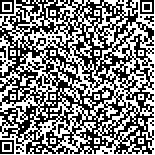Archive > Volume 41 Issue 4 > 2015,41(4):447-455. DOI:10.7519/j.issn.1000-0526.2015.04.007 Prev Next
Slant Path Water Vapor Retrieval with GPS and Application in Rainstorm Analysis
- Article
- Figures
- Metrics
- Preview PDF
- Reference
- Related
- Cited by
- Materials
Abstract:
Slant path water vapor (SWV) contains the information of the nonisotropic distribution of water vapor in space, and it is the main data source for the 3D water vapor density analysis. The SWV time series obtained by observing stations directly the uneven distribution and changes of water vapor surrounding the station receiver. SWV algorithms is established by using the zenith precipitable total precipitable water vapor (PWV) inversion techniques, the wet mapping function, horizontal gradient function of wet atmospheric and the residual processing technology. By comparing the observations of GPS and microwave radiometer, we find the average deviation of SWV is 5.8 mm, and RMS is 4.4 mm in 50°-90° elevation range. In comprehensive analysis, the products of SWV time series that are combined with rainstorm observation cases by radar and microwave radiometer can better express the detailed features of the water vapor surrounding the station, such as the accumulation and the reduction of water vapor before and after the precipitation respectively, is which would be new reference information for the warning and forecasting of severe convection weather and related mechanism research.
Keywords:
Project Supported:
Clc Number:


Mobile website









